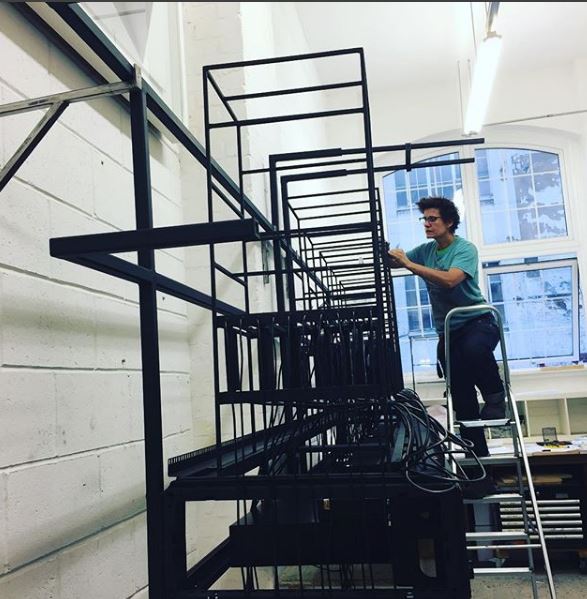This Much I'm Worth
This Much I'm Worth (The self-evaluating artwork) | 2017
83 pieces of neon, recycled server room equipment, electronics, computers, IP Cameras, Programming
420 cm x 160 cm x 90 cm ( 165"x 63"x 45"): Weight approx 400 KG
83 pieces of neon, recycled server room equipment, electronics, computers, IP Cameras, Programming
420 cm x 160 cm x 90 cm ( 165"x 63"x 45"): Weight approx 400 KG
“This much I’m worth [The self-evaluating Artwork]” is a digital art piece that continually displays its sale value through a series of complex algorithms called "the endorsers". It is constructed with materials that have a history loaded with association. Implicated in the history of neon is its use in the sex trade, its cultural significance today is more commonly a trope of contemporary art. It is both a functional object and spectacle seeking to question values, worth and algorithmic bias.
Whitechapel Gallery Catalogue
| whitechapel_gallery_catalogue.pdf |
Summary
- The artwork displays its sales value [GBP] that is calculated nightly offline by complex algorithms called "the endorsers"
- The endorsers study social media, pricing sites and many other resources including the financial markets. They apply adjustments to the calculated price based on the provenance, gender, race and sexuality of the artist. #algorithmic_bias
- Within the gallery the artwork price fluctuates through lives streams to social media and responding to audience behaviour. #thismuchimworth #rachelara
- The artwork monitors the audience via 2 IP Cameras and collates the data on the internet of things.
- This work was hand built and programmed entirely by women (myself and the Neon Blower (Julie Bickerstaff @ NeonUnity), referencing industries where women are often excluded.
|
IMAGE: Artist in her studio hand building the work taken by Laura Hudson.
BackgroundThis work was completed and installed in Anise Gallery, London SE1 as part of a show called "Controlled Realities" in 2017 It's the full scale version of the award winning sculpture "This Much I'm Worth [A Self Evaluating Artwork][Prototype]" that won the Aesthetica Art Prize in 2016.
The sculpture is over 4 meters long and 2 meters high, substantially increasing the scale of the prototype bringing into play issues such as scale and spectacle into the equation. This version has substituted sensors for IP cameras, replaced Nixie tubes with full Neon Tubes (84 Pieces in Total) and employing recycled server room equipment to create a home made animation system for the neon. Image Above: First studio tests of the Neon Nixie Cage (pre blackout paint)
EVA 2017 Conference Paper on the Making of this work entitled "The Making of a Digital (Master)Piece"
|
Interview for Aesthetica Anthology:
| ||
IMAGE: [LEFT] This Much I'm Worth taken by Anise Gallery
